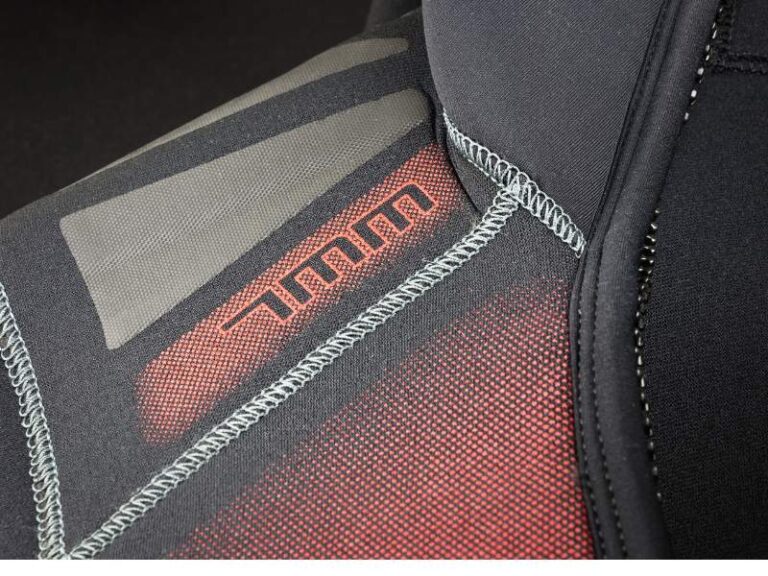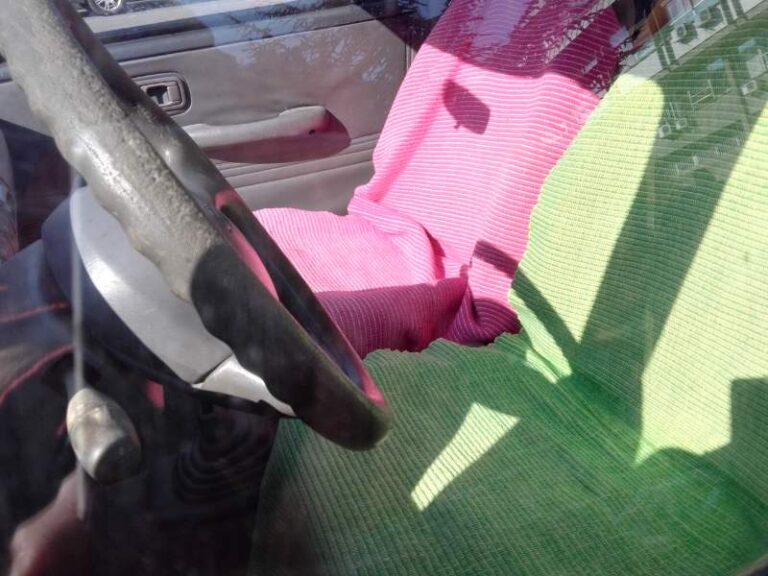What Is Destroys Neoprene? Science Behind Neoprene Material
Neoprene is primarily destroyed by prolonged exposure to sunlight and contact with certain chemicals. Neoprene, a highly versatile and durable synthetic rubber, can be subjected to detrimental effects when exposed to UV radiation from sunlight and when it comes into contact with chemicals such as oils, solvents, and certain types of acids.
This material is highly popular in various industries, including apparel, automotive, and water sports, due to its excellent resistance to heat, weather, and aging. However, it is important to be aware of the factors that can cause damage to neoprene to ensure its longevity and optimal performance.
We will explore the specific agents that can destroy neoprene and provide guidance on how to protect and care for neoprene products.
Heat: Neoprene’s Silent Disintegrator
Heat is one of the most significant factors that can quietly destroy neoprene. Elevated temperatures can have detrimental effects on the durability and performance of this material. Exposure to excessive heat can cause neoprene to disintegrate over time, compromising its functionality and structural integrity.
There are several sources of damaging heat exposure that neoprene can encounter. Direct sunlight, for example, can subject neoprene to intense heat, especially when exposed for extended periods. This is particularly concerning in outdoor applications such as wetsuits or protective gear that are frequently exposed to prolonged sunlight.
Heat can also be generated from other sources such as hot surfaces, machines, chemical reactions, or even body heat. When neoprene comes into contact with these high temperatures, it can gradually break down, leading to a shortened lifespan and decreased performance.
To ensure the longevity and effectiveness of neoprene products, it is crucial to minimize heat exposure and employ proper storage techniques. Protecting neoprene items from excessive heat, utilizing suitable insulation, and storing them in a cool and dry environment can significantly extend their lifespan.
Chemical Battles: Harsh Substances
Neoprene, a versatile and durable material, is highly resistant to many damaging agents. However, there are certain chemicals that can cause significant harm to neoprene, weakening its integrity and reducing its lifespan. These chemicals include solvents, petroleum-based products, chlorine, and certain cleaners.
| Substance | Effects on Neoprene |
|---|---|
| Solvents | Solvents can wreak havoc on neoprene by breaking down its molecular structure. They can cause the material to become brittle, crack, or even dissolve completely. |
| Oil and Petroleum | Oil and petroleum-based products can lead to deterioration of neoprene. These substances can cause swelling, softening, and ultimately, a loss of elasticity in the material. |
| Chlorine and Cleaners | Chlorine and certain cleaners containing harsh chemicals can significantly impact neoprene. They can cause discoloration, fading, and in some cases, degradation of the material itself. |
It is important to exercise caution when using neoprene products in environments where these chemicals are present. Proper care and maintenance, including regular cleaning with mild, non-abrasive soaps, can help extend the lifespan of neoprene items, ensuring their continued functionality.
Physical Stress: Tearing Neoprene Apart
Neoprene, a versatile and durable material commonly used in various applications, is not invincible. Stretching and compression exert significant wear and tear on neoprene. Over time, repeated stretching can cause the material to lose its elasticity and structural integrity, leading to cracks and breaks. Similarly, cuts and abrasions resulting from daily use can compromise the protective layer of neoprene, making it susceptible to further damage.
Stretching and compression place immense strain on neoprene, especially when it exceeds its limits. The constant stretching weakens the material, ultimately making it prone to tearing. Additionally, cuts and abrasions from regular wear and tear can create points of weakness, compromising neoprene’s ability to withstand physical stress.
It is vital to take preventive measures to prolong the lifespan of neoprene products. Regular inspections, prompt repairs of cuts and tears, and avoiding unnecessary strain are key to minimizing damage and extending the usability of neoprene items.
Sunlight And Ozone: Invisible Degradants
Neoprene, a versatile and widely used material, can be susceptible to degradation over time. Two major culprits responsible for the deterioration of neoprene are sunlight and ozone. UV radiation emitted by sunlight can penetrate the surface of neoprene and break down its molecular structure.
This leads to a loss of elasticity and strength, making the material brittle and more prone to cracks and tears. Ozone, a highly reactive gas found in the atmosphere, can also have a chemical influence on neoprene degradation. It can accelerate the deterioration process by reacting with the polymer chains in neoprene, causing them to become weaker and less resistant to stress.
To ensure the longevity of neoprene products, it is essential to protect them from excessive sunlight exposure and ozone-rich environments. Providing adequate shade or using protective covers when storing or using neoprene items outdoors can help minimize the damaging effects of sunlight. Similarly, storing neoprene away from electrical equipment or sources of ozone, such as copy machines or generators, can prevent ozone-related degradation.
Saltwater Soak: Surf And Dive Gear’s Enemy
Exposing neoprene gear to saltwater can have detrimental effects on its longevity and performance. The salt crystals present in saltwater can lead to irreversible damage to the material. These crystals act as abrasive agents, gradually wearing down the neoprene over time. As the crystals penetrate the surface of the gear, they create small cuts and tears, weakening its structural integrity.
Moreover, the salt in the water can cause the neoprene to lose its flexibility and elasticity. It dries out the material, making it stiff and prone to cracking. This can affect the gear’s ability to provide insulation and protection, compromising the user’s comfort and safety.
To mitigate the destructive effects of saltwater on neoprene gear, it is crucial to rinse the equipment thoroughly with fresh water after each use. Additionally, applying a specialized conditioner or lubricant specifically designed for neoprene can help keep the material supple and prevent saltwater damage. Regular inspections for signs of wear and tear and timely repairs are also essential to prolong the lifespan of neoprene gear.
Storage Missteps: Encouraging Neoprene Damage
Proper storage practices are crucial in maintaining the quality of neoprene items. Failing to do so can result in damage, compromising its durability and performance over time. Understanding the factors that destroy neoprene can help in preserving its longevity.
Neoprene is a versatile and durable material commonly used in various applications, from wetsuits to laptop sleeves. However, it is important to pay attention to proper storage to ensure its longevity. One common mistake is incorrect folding and crumpling. Folding or crumpling neoprene can lead to creases and stress points, weakening the material over time. It is essential to store neoprene flat or hanging to avoid unnecessary strain.
Additionally, long-term storage conditions can also pose a risk to neoprene. Temperature extremes, excessive moisture, and exposure to sunlight can all contribute to its degradation. Maintaining a consistent environment with moderate temperatures and low humidity is crucial. When storing neoprene, it is best to keep it in a cool, dry, and dark place, away from direct sunlight and heat sources. By following these storage guidelines, you can prevent neoprene damage and extend the lifespan of your neoprene products.
The Aging Factor: Neoprene’s Lifecycle
Neoprene’s durability can be compromised by various factors, including exposure to sunlight, high temperatures, and contact with oil and solvents. Over time, these elements can break down the material, leading to its deterioraton.
Neoprene, a versatile synthetic rubber known for its excellent durability and resistance, undergoes inherent degradation over time. This aging process, caused by various factors, can eventually lead to the deterioration of the material’s properties. One of the primary factors affecting neoprene is exposure to sunlight and ultraviolet (UV) radiation. Sunlight accelerates the aging process of neoprene by breaking down the rubber’s molecular structure, causing it to become brittle and less elastic.
In addition to UV exposure, other reactive substances can also contribute to the degradation of neoprene. Chemicals, solvents, and oils can react with the rubber, leading to swelling, softening, and potentially compromising its overall integrity. Extreme temperatures, both hot and cold, can further weaken neoprene, causing it to lose its flexibility and strength.
Understanding the factors that contribute to neoprene’s aging process is crucial to prolonging its lifespan and maintaining its performance. Taking proactive measures such as proper storage, regular cleaning, and using protective coatings can help mitigate the effects of deterioration and extend the life of neoprene products.
Protective Practices: Extending Neoprene’s Life
Proper cleaning methods are essential to prevent damage to neoprene and extend its life span. When cleaning neoprene products, it is important to use mild soap and water, avoiding harsh detergents or chemicals that can deteriorate the material. Gently scrubbing the surface with a soft brush or cloth will help remove dirt and grime without causing excessive wear and tear. It is also recommended to rinse the neoprene thoroughly to ensure all soap residue is removed.
In addition to proper cleaning, storing neoprene correctly is crucial for its longevity. Neoprene should be stored in a cool, dry place away from direct sunlight. High temperatures and humidity can degrade the material over time. Additionally, neoprene items should be stored flat or hung, avoiding folding or creasing that can lead to permanent damage.
To further protect neoprene and extend its lifespan, using protective products and treatments is beneficial. Neoprene-specific waterproofing or sealing sprays can provide an extra layer of protection against moisture and prevent premature deterioration. Regularly applying these treatments can help maintain the flexibility and durability of neoprene products.
Frequently Asked Questions On What Destroys Neoprene?
What Destroys Neoprene?
Neoprene can be destroyed by exposure to harsh chemicals, excessive heat, and prolonged exposure to sunlight. Harsh chemicals such as oil, gasoline, and acetone can break down the material. High temperatures can cause neoprene to melt or deform. Extended exposure to sunlight can cause neoprene to deteriorate and lose its elasticity.
Conclusion
Understanding what destroys neoprene is important for its longevity and performance. Exposure to excessive heat, oils, solvents, and sharp objects should be avoided to maintain the material’s integrity. Regular cleaning and proper storage also play a crucial role in preserving the quality of neoprene products.
By following these precautions, you can ensure that your neoprene items last longer and continue to serve their purpose effectively.
- Can I Get in a Taxi Without a Car Seat? - January 26, 2025
- Can I Get Chlamydia From a Toilet Seat? - January 26, 2025
- Can I Get an Uber With a Car Seat? - January 26, 2025






